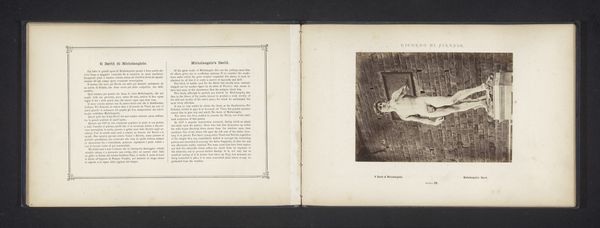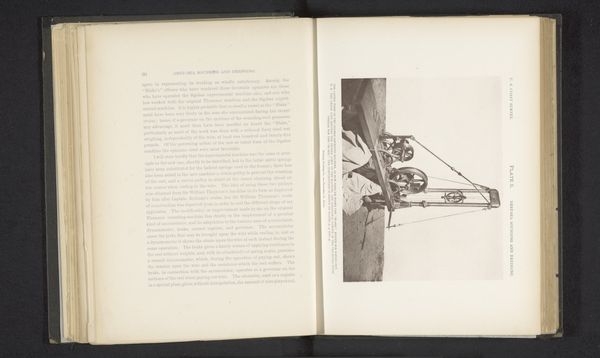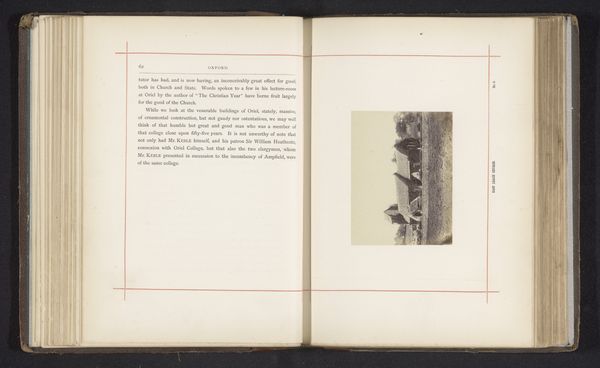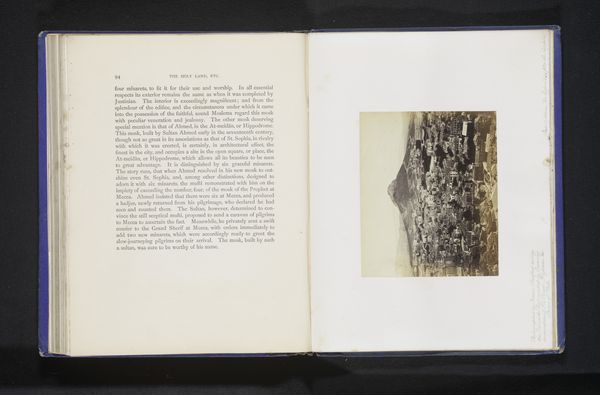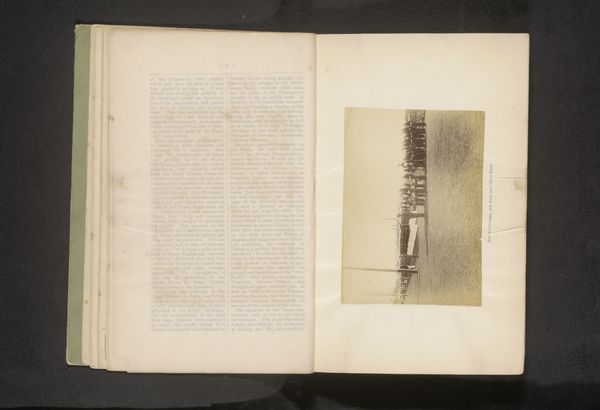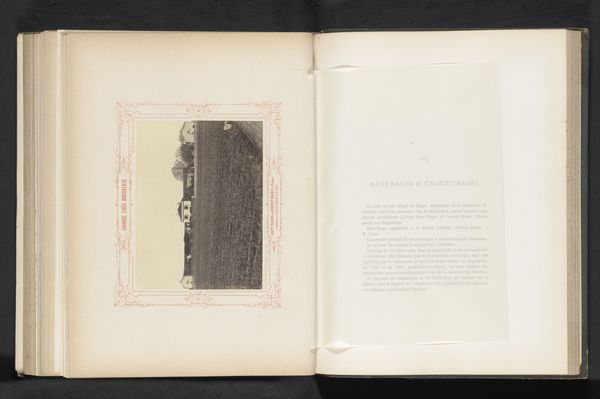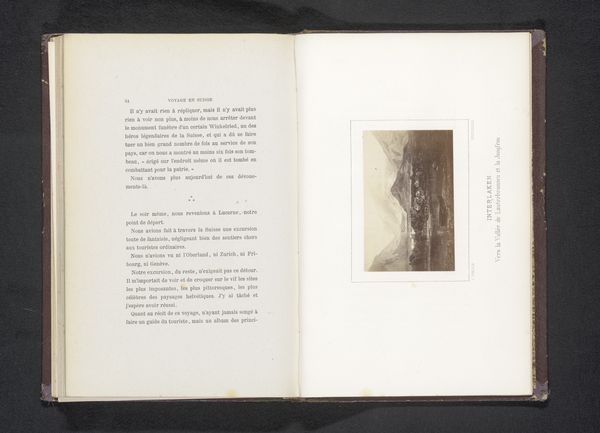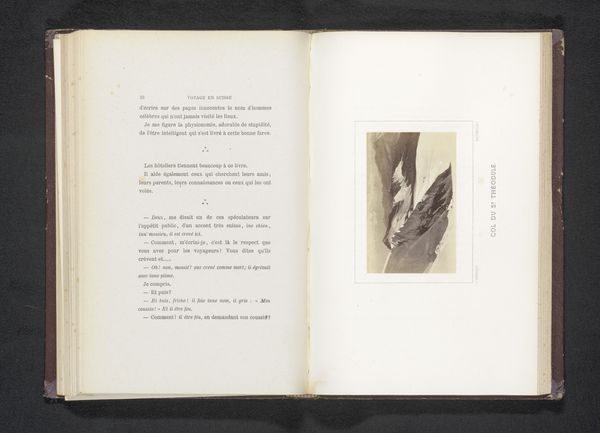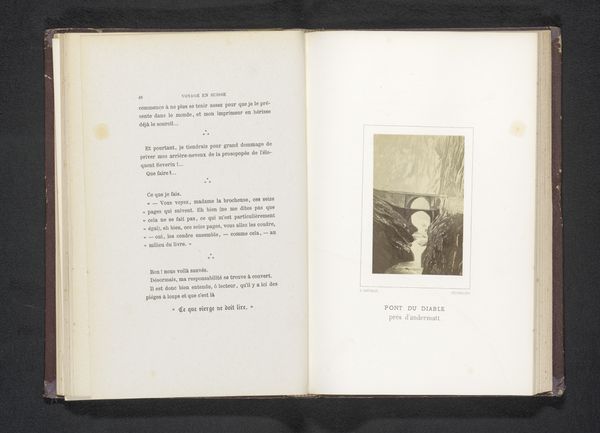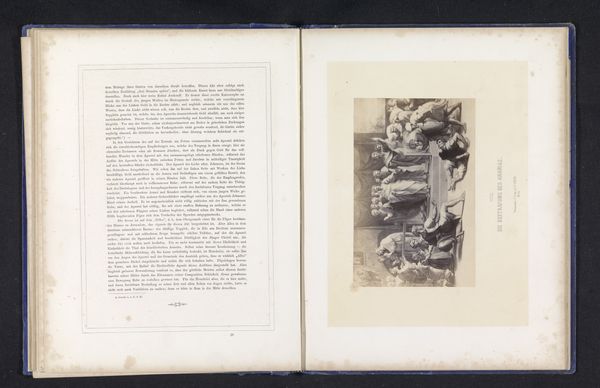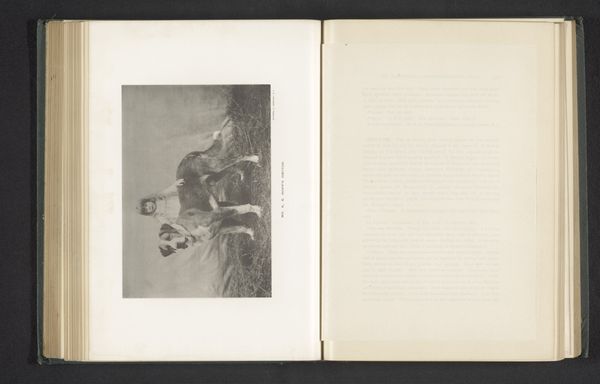
print, photography, albumen-print
#
still-life-photography
# print
#
photography
#
albumen-print
Dimensions: height 130 mm, width 139 mm
Copyright: Rijks Museum: Open Domain
Curator: Looking at this opened volume, on the right page we see a photogravure image titled “Stalen sondeerhaspel,” or “Steel Sounding Reel.” The date given is before 1880. It’s an albumen print, part of a book—most likely a scientific study of some sort. Editor: Immediately, what strikes me is how stark the presentation is. It’s this dark steel object, contrasted sharply against a very light background. The photographer seems entirely focused on shape, texture and tonal range, rather than offering us a realistic representation within a setting. Curator: Yes, the decision to isolate the instrument removes it from its operational context, making it easier, perhaps, for viewers to examine its structure and utility in geological surveying practices. Before 1880, scientific progress and visual documentation were intrinsically linked. These albumen prints served to democratize this visual information. Editor: The repetitive pattern of perforations around the perimeter is so pleasing to the eye, an exercise in restrained geometry, like minimalist sculpture, perhaps something along the lines of Agnes Martin but obviously more industrial. There’s also a peculiar, subtle roundness in its rendering. The tones are perfectly captured by the lens. Curator: Well, these items were symbols of progress and knowledge acquisition. The scientific books served as visual testimonies, documenting their utility for industrial and academic use. The inclusion of such items in books disseminated knowledge beyond elite circles. It served a social function. Editor: I can definitely see your point. Still, if we detach from all these associations for a moment, the way the artist manipulates the available light is fascinating. It has a sculptural quality I think, especially where the metal meets the drape of fabric holding the object. Curator: In summary, this photographic plate exemplifies the crucial role visual documentation played in disseminating scientific knowledge and promoting industrial development during the late 19th century. Editor: I see the inherent allure of that approach to the work. However, what really held me captive was the visual artistry displayed in that small rectangular print, a fascinating lesson in tonality.
Comments
No comments
Be the first to comment and join the conversation on the ultimate creative platform.
